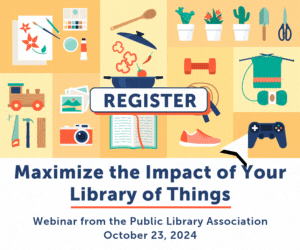Five Kitchen Sink Science Experiments to Try at Home

Citizen science is when people like you make hypotheses, gather data, and share their findings with researchers. As a citizen scientist, you can do science wherever you are. That includes right inside your house! There are many projects you can do at home, including some that will put not just your mind to work, but your hands as well. For everyone who likes to get down and dirty with their projects, there are loads of engaging, simple science projects that you and your family can start today.
Even better, many of these projects focus on the indoors specifically. It’s a great opportunity to learn more about how your living space connects to the greater world around you, and collect some data for science to boot. Here, we’ve selected five projects that ask you to explore the world inside and around a home. You’ll get your hands wet, your feet dirty and your kitchen sink messy — all ingredients to a great experience that makes a difference for science, too.
Crowd the Tap
Safe drinking water should be a given for everyone in the United States. But in some places around the country, old and degraded pipes can leach lead or other contaminants into household water. Crowd the Tap gives you the tools to find out if your house may be at risk of lead contamination, and it asks participants to add their data to a national census of water quality. The goal is to help authorities prioritize areas for water testing and infrastructure replacement, and to help ensure clean water for all.
The project, funded by the Environmental Protection Agency, Virginia Tech and North Carolina State University, asks participants to take a few simple steps to assess the water in their house. Fill out a survey with some basic information about your area and household, as well as the water coming out of your tap. Then, you have the option to get hands-on and perform a few simple tests to find out what your pipes are made of. The data is collected by researchers and added to a growing national database aiming to compile a comprehensive look at water quality around the country.
Sourdough for Science
Bread is just flour, water, and salt, right? Not quite: There’s a secret ingredient that gives breads from around the world their special tastes and textures. That special ingredient is microbes — bacteria and yeast that help produce the wide variety of bread we see around us.
With Sourdough for Science, you can explore the diversity of microbes that make bread unique, and have a tasty snack while you’re at it! The project guides participants through the steps of making a basic sourdough loaf. Then, over the course of two weeks, you’ll take a series of measurements that will clue you in to the microbial interactions taking place inside your bread. That data will be used by researchers to better understand how different types of microbes grow and behave in different types of flour. Then, when it’s all over, enjoy a delicious sandwich!
Space Scurvy
Astronauts going to space might confront a problem that bedeviled sailors of centuries past: scurvy. The condition, characterized by skin problems, anemia, and loose teeth, occurs when we don’t get enough Vitamin C.
The Space Scurvy citizen science project asks participants to imagine they’re a 21st-century space explorer deciding what fruit juices to take along with them to avoid scurvy. Follow the simple instructions to put together a science kit from household ingredients that will let you test the Vitamin C content of the juices you have at home. Which is the best to take to space?
This short, simple science experiment is ideal for families and classrooms, and it offers a hands-on way to unlock the science of the everyday. And, best of all, you can pretend to be both a pirate AND an astronaut.
Plant a Pollinator Garden: Great Sunflower Project
As spring arrives, there’s no better time to get outside and in the garden. The Great Sunflower Project asks participants to venture into the great outdoors in search of plants that pollinators visit. The goal is to record all the pollinators, like bees and butterflies, that visit to build a record of insect population health across the country.
Sunflowers are just one of the many plants you might have in your garden at home that need pollinators to survive. Check in with the plants around you this spring, and help contribute to a nationwide database of pollinators. And, while you’re at it, consider creating a pollinator garden filled with plants that the insects near you love to visit. Then, check out our Pollinator Gardens hub page to find out about all the citizen science you can do there.
Household Waste Audit
When we throw something in the trash, most of us just forget about it. But that trash sticks around in landfills, or gets burned for heat and energy, creating greenhouse gases. The Household Waste Audit tasks participants with thinking more deeply about the stuff they use and then throw away.
Spend a week sorting and cataloging everything you throw away, paying special attention to single-use plastics. Of the 33.6 million tons of plastic Americans use every year, just around 6 percent of it is actually recycled. At the end of the week, tally everything up and use the total as a chance to brainstorm some creative ways to reduce waste and recycle more.









